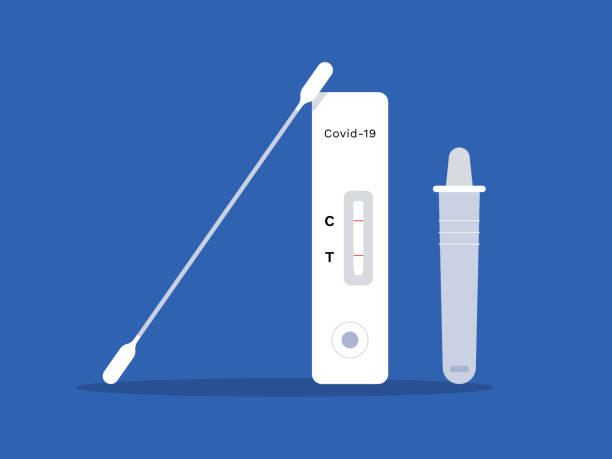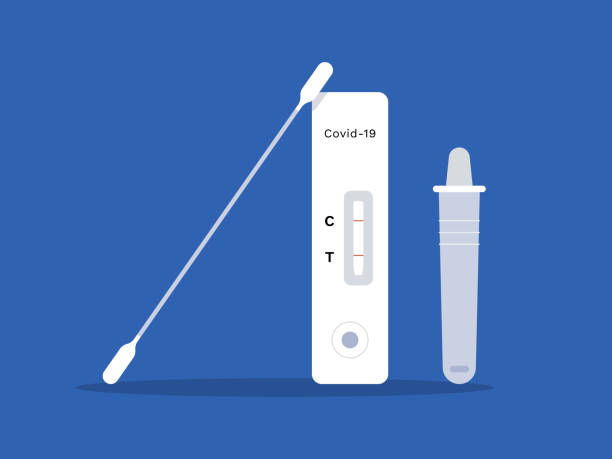The popularization of rapid antigen self-testing has become a key link in epidemic prevention and anti-epidemic.
The purpose of testing includes monitoring - tracking the spread of the virus, collecting data on infection cases, clinical diagnosis, tracking the dynamics of virus mutation, and population screening to identify those most likely to spread the virus and reduce the source of transmission.
There are three main categories of COVID-19 tests: antigens, nucleic acids and antibodies, which are suitable for different purposes. Antigen and nucleic acid tests are diagnostic tests to check for current infection, while antibody tests check the history of infection.
The technology is Antigen rapid self-test is mainly lateral flow testing (LFT).
What is an antigen test? What are the main features?
Antigen test is used for rapid diagnosis (or exclusion) of active coronavirus infection, also known as rapid test, rapid antigen test, rapid self-test and other different terms, using nasopharyngeal, nose or throat test or saliva samples to check the protein on the surface of the virus.
A positive test result is relatively accurate, but a negative result may include a "false negative", that is, the virus has been infected but no antibodies have been formed at the time of the test, so it is negative.
If the antigen test result is positive, nucleic acid testing can usually be done to determine whether there is infection or not.
Before the epidemic prevention restrictions were lifted in the UK, the recommendation of National Health Service(NHS) was that if the LFT (Flow Antigen Test) result is positive, a PCR (polymerase chain reaction) test, that is, a nucleic acid test, should be done to confirm whether it is positive or not.
The two main features of antigen testing can be understood from its name: one is fast - results can be obtained in 15-30 minutes; the other is self-test - sampling and testing are done by yourself without sending it to the laboratory.
How the LFT antigen rapid self-test works
During the test, the reagent is added to the nasopharyngeal/throat sample, and if there is an infection, the protein on the surface of the virus in the sample will be found, showing a positive result. The LFT kit consists of a strip of paper-like material called nitrocellulose (NC membrane), and a small red pad embedded in the plastic casing of the test strip below the T-line (test line). Gold-labeled antibodies (or colored antibodies of other materials) that can bind to the novel coronavirus are immobilized on this mat to show the location of the antibodies on the test strip. The nasopharyngeal/throat swab sample is mixed with buffer and dropped on the kit, and it flows laterally through the NC membrane by capillary action, taking away the gold-labeled antibodies on the NC membrane. If the virus is present in the sample, it will bind to the gold-labeled antibody. When the red gold-labeled antibody passes through the T line, it encounters a second group of antibodies, which will also bind to the virus, and the two groups of antibodies bind to the virus to form an antibody complex. The test result is positive when everything, including the gold label, has precipitated and developed color at the T-line (ie, the second red line on the test nucleus). The gold-labeled antibodies that are not bound to the virus continue to migrate on the test strip and encounter a third group of antibodies, located on the C line (control line). They are not used to detect the novel coronavirus, and can capture the remaining free gold-labeled antibodies, showing a horizontal line, which indicates that the test is complete.
Nucleic acid and antibody detection
According to the classification of detection targets, diagnostic tests are divided into two categories: nucleic acid and antigen. Nucleic acid detection is aimed at the genetic sequence of the virus to check for the presence of viral ribonucleic acid (RNA); antigen detection is aimed at virus surface proteins to check for the presence of viral antigenic proteins.
According to the technology, the current antigen detection is mainly LFT (lateral flow antigen detection), and the nucleic acid detection is mainly PCR (polymerase chain reaction). NAAT (Nucleic Acid Amplification Test) is also a kind of nucleic acid test, and both PCR and NAAT are molecular tests. All diagnostic tests require the collection of samples, including nasopharyngeal, throat swabs, and saliva. Anal swabs have also been used as a way to collect samples during screening.
Vaccination does not result in a positive antigen or nucleic acid test.
Antibody Tests - Find out if you have ever been infected with coronavirus
Also known as a serological test, a blood sample is used to check whether antibodies against the virus have been produced. People who have recovered from viral diseases have varying degrees of immunity. Like antigen tests, antibody tests can also give false negative results in early infection.
Nucleic acid testing - to diagnose (or rule out) active coronavirus infection
Such tests include PCR, NAAT, using a nasopharyngeal, nose or throat swab or saliva sample to detect the presence of viral genetic material (RNA). Nucleic acid test results are generally regarded as the "gold standard" and do not need to be repeated for verification.Viral RNA is present before antibodies are formed or symptoms appear, allowing early detection of infection. PCR - Polymerase Chain Reaction is the most commonly used nucleic acid test today. During the test, a substance called reverse transcriptase or DNA polymerase is added to the nasopharyngeal sample. If a virus is encountered, this substance will replicate the viral RNA in large quantities, producing hundreds of millions of RNA copies, enough to cause a positive result. This is because the primers and probe antennae in the reagents attach to the viral genetic code sequence, signaling the discovery of the pathogen.PCR tests need to be sent to a laboratory for analysis, and results are usually available within 24 to 48 hours; if used to confirm a specific variant, it may take longer.



